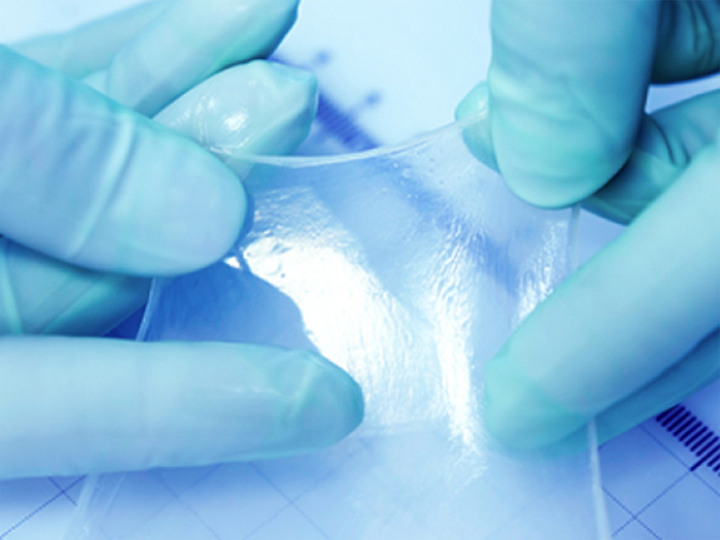Amniotic Membrane Graft for Wounds: The Natural Solution for Advanced Healing
Posted by Acesso biologics
Filed in Health 64 views
In the field of modern wound care, few innovations have made as significant an impact as the amniotic membrane graft for wounds. Derived from the innermost layer of the placenta, this biologic material is rich in growth factors, anti-inflammatory proteins, and collagen — all essential components for natural tissue regeneration.
For patients struggling with chronic, non-healing wounds, amniotic membrane technology represents a major advancement. It doesn’t just cover a wound; it creates a biologically active environment that encourages the body’s own cells to repair, restore, and rebuild.
What Is an Amniotic Membrane Graft?
An amniotic membrane graft is a biologic allograft processed from donated human placentas following healthy, full-term cesarean deliveries. The amniotic membrane naturally serves as a protective barrier during pregnancy, providing oxygen and nutrients to the developing fetus while preventing infection.
When used in clinical applications, that same biological power supports tissue repair and healing. The membrane is carefully sterilized, preserved, and prepared in several forms — such as dehydrated sheets, cryopreserved grafts, or micronized particulate — to suit different medical uses.
The result is a safe, biocompatible graft that supports faster wound closure, reduces inflammation, and helps minimize scarring.
Why Use Amniotic Membrane Grafts for Wound Healing?
Chronic wounds, such as diabetic foot ulcers, venous leg ulcers, pressure sores, and traumatic injuries, can be extremely difficult to heal using traditional methods. Factors like poor circulation, inflammation, and bacterial infection can stall the natural healing process.
Amniotic membranes change that dynamic. They work by delivering biologically active components directly to the wound site, including:
-
Growth factors that stimulate new tissue formation.
-
Cytokines that regulate inflammation and promote balance.
-
Collagen and extracellular matrix proteins that support structural repair.
-
Antimicrobial peptides that protect against infection.
Together, these elements create a regenerative microenvironment where new cells can thrive and wound healing can occur naturally and efficiently.
The Science Behind Healing
What sets amniotic membrane technology apart is its biological intelligence. When applied to a wound, it acts as a natural scaffold — a temporary matrix that helps the body rebuild healthy tissue from the inside out.
The graft not only promotes cellular growth but also provides:
-
Moisture balance, essential for optimal healing.
-
Anti-scarring properties, reducing fibrotic tissue formation.
-
Pain relief, thanks to its anti-inflammatory and protective qualities.
Unlike synthetic dressings or chemical treatments, amniotic tissue works with the body, not against it, providing an ideal environment for regeneration.
Clinical Applications of Amniotic Membrane Grafts
The amniotic membrane graft for wounds is used across multiple fields of medicine because of its versatile healing properties.
1. Chronic and Non-Healing Wounds
For patients with diabetic or vascular ulcers, the membrane helps restart stalled healing by reintroducing growth factors and improving cell signaling at the wound site.
2. Burns and Traumatic Injuries
Amniotic tissue provides a natural biologic covering that soothes pain, prevents infection, and accelerates recovery in burn victims and trauma patients.
3. Post-Surgical Wound Care
Surgeons use amniotic membranes to reduce inflammation, minimize scarring, and enhance tissue integration after complex procedures.
4. Dermatology and Plastic Surgery
Amniotic grafts are used in cosmetic and reconstructive surgery to improve healing outcomes while preserving the natural appearance of the skin.
The Role of Amniotic Grafts in Regenerative Medicine
Among the growing class of biologic therapies, amniotic grafts stand out for their proven clinical effectiveness and ethical sourcing. Because they are derived from consenting donors following cesarean deliveries, they are both safe and sustainable.
Their natural regenerative composition allows them to outperform synthetic alternatives by providing the body with the biologic cues it needs to repair itself. Hospitals and wound care clinics across the country now rely on these grafts to improve healing times, reduce infection risks, and enhance patient comfort — especially in cases where traditional care methods fall short.
As a biologically active wound covering, amniotic grafts offer the perfect balance of protection, regeneration, and long-term tissue health.
Benefits of Amniotic Membrane Grafts
Healthcare providers turn to amniotic membranes for a wide range of benefits, including:
-
Accelerated wound closure: Growth factors help speed up epithelialization.
-
Reduced inflammation: Anti-inflammatory proteins calm the wound environment.
-
Lower infection risk: The natural antimicrobial barrier keeps bacteria at bay.
-
Less pain: The protective layer reduces nerve exposure and discomfort.
-
Improved cosmetic results: Anti-fibrotic properties limit scar formation.
-
Ethical and safe sourcing: All tissue is obtained through voluntary donation with rigorous screening.
For patients, these benefits translate into faster recovery, fewer complications, and better quality of life.
The Future of Biologic Wound Care
The adoption of amniotic membrane technology is growing rapidly, fueled by ongoing research and clinical success stories. Scientists are exploring ways to enhance these biologic materials with stem cell integration, 3D printing, and nanotechnology to further improve healing outcomes.
As these innovations progress, one thing is clear: the amniotic membrane graft for wounds is not just an alternative to traditional wound care — it’s the future of regenerative healing.
By combining natural biology with modern science, it bridges the gap between innovation and the body’s innate ability to heal.
Final Thoughts
Chronic and complex wounds demand solutions that go beyond standard dressings and topical treatments. Amniotic membrane grafts deliver exactly that — a biologically active, regenerative platform that helps the body heal faster, stronger, and more naturally.
For clinicians and wound care specialists, adopting this technology means offering patients the best of both worlds: science-backed performance and nature-inspired healing.
As regenerative medicine continues to evolve, the amniotic membrane graft stands as a testament to what’s possible when innovation meets biology — a natural solution with the power to transform wound care for good.
